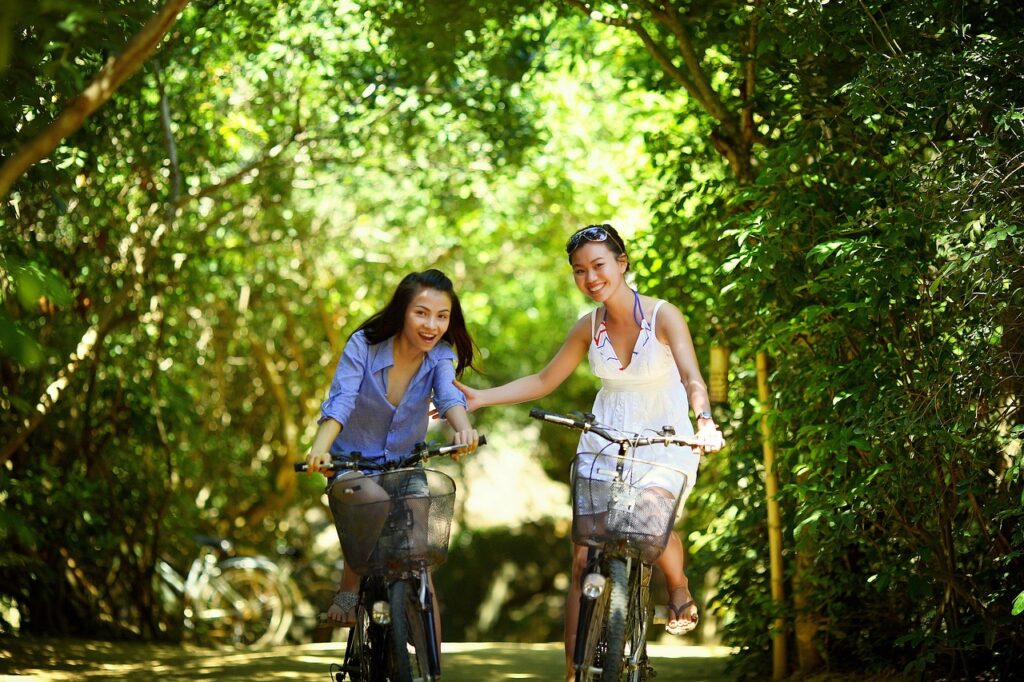Imagine a world where the waterways are free from the invasive and troublesome water hyacinth. Picture serene lakes and rivers, teeming with diverse ecosystems and offering endless possibilities for recreation. In this article, we will explore some innovative and eco-friendly approaches that have been developed to combat the water hyacinth menace. From using natural predators to harnessing the power of technology, these methods offer hope for a future where we can enjoy our water resources without the constant battle against this invasive species. So, let’s embark on a journey to discover how we can reclaim our waterways and restore the balance of nature.

1. Introduction
Water hyacinth (Eichhornia crassipes) is an invasive aquatic plant that poses a significant threat to water ecosystems worldwide. Its rapid spread and ability to multiply quickly have led to severe ecological and economic consequences. In recent years, there has been a growing emphasis on adopting eco-friendly approaches to control and manage the water hyacinth menace. These approaches focus on minimizing the environmental impact while effectively combating the spread of this invasive species. This article will explore the various eco-friendly approaches to taming the water hyacinth menace and highlight their benefits and limitations.
2. Understanding Water Hyacinth
2.1 Definition and Features of Water Hyacinth
Water hyacinth is a free-floating aquatic plant that originated in South America but has now invaded water bodies globally. It is characterized by its large, glossy leaves and striking lavender or blue flowers. The plant spreads rapidly due to its ability to reproduce through seeds or vegetatively through stolons and rhizomes. Water hyacinth can form dense mats on the water surface, obstructing sunlight and depleting oxygen levels, thereby negatively affecting the native aquatic flora and fauna.
2.2 Causes of Water Hyacinth Spread
Several factors contribute to the spread of water hyacinth. Some of the primary causes include the introduction of the plant for ornamental purposes, accidental or intentional release into water bodies, and favorable environmental conditions such as temperature and nutrient availability. Inadequate management and lack of awareness also contribute to the rapid proliferation of water hyacinth, allowing it to reach epidemic proportions.
2.3 Negative Impacts of Water Hyacinth
The unchecked growth of water hyacinth has detrimental effects on aquatic ecosystems and human activities. These impacts include the blockage of waterways, hindrance to navigation, reduction of water quality, decreased biodiversity, and disruption of aquatic habitats. The economic consequences of water hyacinth infestations are significant, as they impact fisheries, water supply, hydroelectric power generation, tourism, and agriculture.

3. Importance of Eco-Friendly Approaches
3.1 Environmental Benefits of Eco-Friendly Approaches
Adopting eco-friendly approaches to control water hyacinth offers several environmental benefits. These methods prioritize the use of natural processes and minimize the use of harmful chemicals, reducing contamination of water bodies and preserving the overall ecosystem health. Furthermore, these approaches focus on sustainable solutions that promote long-term stability and balance in the affected areas, allowing for the restoration of native plant and animal species.
3.2 Social and Economic Benefits of Eco-Friendly Approaches
In addition to the environmental benefits, eco-friendly approaches to water hyacinth control also bring about significant social and economic advantages. These approaches often involve community participation and empowerment, leading to a sense of ownership and responsibility for the problem at hand. By engaging local communities, eco-friendly initiatives create employment opportunities, enhance the livelihoods of those affected by water hyacinth infestations, and encourage sustainable economic activities such as ecotourism.
4. Integrated Pest Management (IPM)
4.1 Understanding Integrated Pest Management
Integrated Pest Management (IPM) is an eco-friendly approach that combines multiple strategies to control pests, including water hyacinth, in a holistic and sustainable manner. IPM aims to achieve long-term control by utilizing a combination of cultural, biological, mechanical, and chemical control methods. This integrated approach minimizes the reliance on chemical pesticides and emphasizes the use of environmentally friendly alternatives.
4.2 IPM Techniques for Water Hyacinth Control
IPM employs various techniques to control and manage water hyacinth infestations effectively. These techniques include the use of biological control agents such as insects and pathogens, mechanical removal of water hyacinth mats, physical barriers and floating booms to contain the spread, and the selective use of herbicides. The coordination and integration of these techniques help in achieving sustainable and long-term control of water hyacinth.
4.3 Benefits and Limitations of IPM
IPM offers several benefits over traditional pest control methods. By utilizing a combination of techniques, it reduces the reliance on chemical pesticides, minimizing their potential adverse effects on the environment. IPM also promotes the preservation of beneficial organisms, further contributing to the overall ecosystem health. However, IPM may require significant initial investments and ongoing monitoring and management to ensure its effectiveness. Additionally, the success of IPM depends on the availability of suitable biological control agents and the cooperation of local communities.

5. Biological Control Methods
5.1 Introduction to Biological Control
Biological control is an eco-friendly approach that utilizes natural enemies of water hyacinth to control its growth and spread. This method involves the introduction of specific insects, pathogens, or other organisms that feed on water hyacinth, effectively reducing its population and curbing its invasiveness. Biological control offers a sustainable and self-perpetuating solution that targets the root causes of water hyacinth infestations.
5.2 Natural Enemies of Water Hyacinth
Several insects serve as natural enemies of water hyacinth, feeding on different parts of the plant and impeding its growth. These insects include weevils, moths, and beetles that either feed on the leaves, stems, or roots of water hyacinth. Each insect species targets specific parts of the plant, providing a comprehensive and targeted approach to control. Additionally, certain pathogens can also be used for biological control, infecting and weakening water hyacinth populations.
5.3 Use of Insects for Biocontrol
The strategic introduction of insects as biological control agents has shown promising results in restraining water hyacinth infestations. Weevils, such as Neochetina eichhorniae and Neochetina bruchi, have been successfully used to control water hyacinth in many regions. These weevils feed on the leaves and stems, damaging the plant’s structural integrity and inhibiting its growth. Moths and beetles also contribute to biocontrol efforts by targeting different plant parts.
5.4 Pros and Cons of Biological Control
Biological control methods for water hyacinth offer several benefits. They are environmentally friendly, as they do not involve the use of harmful chemicals or pesticides. They establish a self-sustaining control system, as the introduced insects continue to feed on water hyacinth and reproduce, reducing the need for ongoing interventions. However, biological control methods may have limitations, such as potential unintended impacts on non-target species and the time required for the establishment of an effective control population.
6. Mechanical and Physical Control Measures
6.1 Mechanical Removal of Water Hyacinth
Mechanical removal involves physically removing water hyacinth from water bodies using different methods, such as cutting, raking, or dredging. This approach is particularly effective when dealing with small infestations or localized areas. Mechanical removal helps to immediately reduce the water hyacinth population, prevents further spread, and improves water flow and oxygen levels. However, this method requires regular maintenance and may not be feasible for large-scale infestations.
6.2 Physical Barriers and Floating Booms
Physical barriers and floating booms are used to contain and control the spread of water hyacinth. These barriers act as a barrier, preventing the movement and dispersal of water hyacinth mats. They are typically made of mesh or other materials that allow water to flow through while intercepting water hyacinth. Physical barriers are effective in preventing the colonization of new areas and can be used in conjunction with other control methods to improve their efficiency.
6.3 Cutting and Harvesting Techniques
Cutting and harvesting techniques involve manually or mechanically cutting water hyacinth and removing it from the water. This method reduces the biomass of water hyacinth and temporarily controls its growth. The harvested plants can be used for various purposes, such as composting or biogas production, minimizing waste and maximizing their potential benefits. However, cutting and harvesting need to be performed regularly to prevent regrowth and may be labor-intensive for large infestations.
7. Chemical Control Methods
7.1 Herbicides for Water Hyacinth Control
Chemical control methods involve the use of herbicides to suppress the growth and spread of water hyacinth. Herbicides target the plant’s metabolic processes and disrupt its growth, causing it to wither and die. While herbicides can be effective in rapidly reducing water hyacinth populations, their use should be carefully managed to minimize the negative impact on the environment and non-target species.
7.2 Environmentally Friendly Herbicides
To minimize the environmental impact, environmentally friendly herbicides are being developed and used as an alternative to traditional chemical control methods. These herbicides are specifically formulated to target water hyacinth while being less harmful to non-target organisms and the overall ecosystem. Their selective action allows for more precise control and reduces the risks associated with chemical control methods.
7.3 Benefits and Risks of Chemical Control
Chemical control methods offer the advantage of rapid and immediate reduction in water hyacinth populations. They can be particularly effective for large-scale infestations or areas where other control methods may not be feasible. However, the use of chemical control methods should be carefully regulated to prevent potential adverse effects on non-target species, water quality, and the overall ecosystem. Regular monitoring and precise application are necessary to minimize these risks.
8. Eco-Friendly Use of Water Hyacinth
8.1 Biogas Production from Water Hyacinth
One innovative and eco-friendly application of water hyacinth is biogas production. The high cellulose content present in water hyacinth makes it an ideal feedstock for anaerobic digestion, a process that converts organic matter into biogas. Biogas can be used as a renewable source of energy for cooking, heating, or electricity generation. Utilizing water hyacinths for biogas production not only helps in controlling their spread but also provides an eco-friendly alternative to fossil fuels.
8.2 Water Hyacinth as Organic Fertilizer
Water hyacinth can also be utilized as organic fertilizer due to its high nutrient content. The plant can be composted or converted into nutrient-rich liquid fertilizer through a process called vermicomposting. This organic fertilizer can be applied to agricultural fields, gardens, or nurseries, improving soil fertility and reducing the reliance on synthetic fertilizers. By transforming water hyacinth into a valuable resource, its negative impact can be turned into a positive contribution to sustainable agriculture.
8.3 Craft and Artistic Applications
Water hyacinth can be used in various craft and artistic applications, providing economic opportunities for local communities affected by its infestations. The plant’s long, fibrous stems can be woven into baskets, mats, and other handicrafts, showcasing the creativity and skill of artisans. By transforming water hyacinth into marketable products, it not only generates income but also raises awareness about the environmental issues associated with its growth.
9. Community Participation and Awareness
9.1 Importance of Community Involvement
Community participation is crucial for the success of eco-friendly approaches to water hyacinth control. Engaging local communities creates a sense of ownership and responsibility, leading to sustained efforts in managing the problem. Local knowledge and traditional practices can also contribute to the development of effective and context-specific solutions, ensuring the long-term viability of control methods. By including local communities in decision-making processes and actively involving them in control efforts, a sense of camaraderie and collaboration can be fostered, strengthening the overall outcomes.
9.2 Creating Awareness and Education
Creating awareness and educating communities about the negative impacts of water hyacinth is essential in motivating them to actively participate in control initiatives. Awareness campaigns can help in dispelling misconceptions and promoting a better understanding of the environmental and economic consequences of water hyacinth infestations. Educational programs can focus on teaching sustainable practices and promoting eco-friendly approaches, empowering individuals to become ambassadors for change in their respective communities.
9.3 Support for Sustainable Solutions
Support from governmental agencies, non-governmental organizations, and other stakeholders is crucial in implementing and sustaining eco-friendly approaches to water hyacinth control. These entities can provide technical expertise, financial resources, and necessary infrastructure to support community-led initiatives. Collaboration between different sectors, such as agriculture, environment, and tourism, can lead to comprehensive and long-lasting solutions that address the multifaceted challenges posed by water hyacinth infestations.
10. Case Studies of Successful Eco-Friendly Approaches
10.1 Case Study 1: Eco-Friendly Approach in Country X
Country X implemented an integrated approach to water hyacinth control, combining biological, mechanical, and community participation methods. The introduction of weevils as biological control agents significantly reduced water hyacinth populations, complemented by regular mechanical removal and cutting techniques. Community members actively participated in these control efforts and were engaged in craft and artistic applications of water hyacinth, creating a sustainable economic avenue. This multi-pronged approach resulted in the restoration of affected water bodies and improved livelihoods for local communities.
10.2 Case Study 2: Community-Led Conservation Efforts
In a community-led conservation effort, a coastal village formed a cooperative to address water hyacinth infestations in their surrounding water bodies. The cooperative gathered volunteers and implemented mechanical removal techniques, clearing the waterways regularly. They also collaborated with local artisans to produce handicrafts using water hyacinth, generating income and raising awareness among tourists about the invasive species. Through their collective efforts and innovative solutions, the community successfully controlled the spread of water hyacinth and revitalized their local economy.
10.3 Lessons Learned and Replicability
The case studies highlight the importance of adopting eco-friendly approaches and engaging local communities in water hyacinth control efforts. These approaches offer sustainable and long-term solutions while providing social and economic benefits. They demonstrate the effectiveness of integrated approaches that combine different control methods and leverage the potential of water hyacinth as a resource. The lessons learned from these case studies can be replicated in other regions facing similar challenges, promoting the adoption of eco-friendly approaches and overcoming the water hyacinth menace globally.
In conclusion, adopting eco-friendly approaches to tame the water hyacinth menace is crucial for the preservation of water ecosystems and the well-being of communities. Integrated pest management, biological control, mechanical and physical control measures, chemical control methods, and the eco-friendly use of water hyacinth collectively offer comprehensive solutions that are environmentally sustainable and socially and economically beneficial. Through community participation and awareness, supported by effective governance and collaborative efforts, the water hyacinth menace can be effectively controlled, and its negative impacts mitigated. By embracing eco-friendly approaches, we can restore the balance in water ecosystems and secure a sustainable future for both humans and nature.